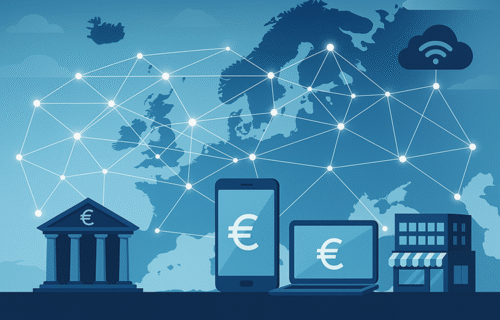Europe’s financial system is in the midst of a quiet structural shift. Behind the familiar logos of banks, retailers, telecoms, and digital platforms, an intricate network of shared financial infrastructure is redefining how credit, payments, and insurance reach consumers. The so-called white labelling model — where licensed banks provide the backbone for financial services marketed under another brand — is expanding rapidly across the EU. Supporters see it as a new frontier for financial inclusion and innovation. Critics warn it could become the next regulatory blind spot.
In the European Banking Authority’s latest assessment, white labelling is described as one of the most transformative trends in the single market since open banking. It allows non-financial firms to offer products such as loans or cards using a partner bank’s licence, cutting development costs and speeding market entry. For fintechs and consumer brands, this model unlocks access to customers without the burden of full regulatory compliance. For banks, it opens a new line of business as back-end providers rather than customer-facing institutions.
But success has come with questions. Who is really responsible when something goes wrong — the brand the customer sees or the licensed institution behind it? Regulators across the EU are becoming increasingly concerned about accountability gaps, data protection, and potential abuse of cross-border structures. The European Banking Authority and national supervisors are now mapping the sector to establish clearer boundaries between marketing partners and licensed providers. Their focus is to ensure that consumers always know whose product they are using, and that every partner in the chain meets consistent standards of conduct and supervision.
The European Commission, too, is watching closely. As part of its digital finance and data strategy, Brussels wants to encourage innovation but also avoid a repeat of past financial scandals where intermediaries blurred lines of responsibility. The lessons are fresh: in the United Kingdom, the Financial Conduct Authority is overseeing an £11 billion compensation process after lenders and dealers mis-sold car loans through opaque commission models. In Spain, major banks have been fined for mis-selling complex products to small companies. Across Europe, regulators point to these episodes as warnings about what can happen when intermediaries act without full transparency or oversight.
The EBA’s review found that white-labelling arrangements can pose similar risks, especially in money-laundering prevention and consumer protection. The licensed entity remains legally responsible for compliance, yet often has limited control over how partners market or distribute financial products. In some cases, non-bank partners lack the expertise to detect suspicious transactions or ensure data security. That creates vulnerabilities not only for consumers but for the broader financial system.
Still, regulators acknowledge that white labelling has powerful advantages. It lowers costs for smaller market entrants, accelerates digital transformation, and helps reach groups that traditional banks have overlooked. In southern and eastern Europe in particular, partnerships between banks and retailers have introduced payment solutions and microcredit schemes to communities with limited access to financial services. Some analysts argue this trend may ultimately increase competition and efficiency in Europe’s financial markets.
Industry experts say the key to balancing these outcomes lies in transparency and clear supervision. Each product offered under a partner brand should clearly identify the licensed institution responsible for safeguarding customer funds and handling complaints. Both sides should also share accountability for anti-money-laundering checks and data protection standards. In its latest guidance, the EBA calls for a “chain of accountability” model, under which all partners in a financial product’s lifecycle must meet traceable compliance obligations.
Meanwhile, banks themselves are reconsidering their strategies. Many now see their future role not as traditional lenders, but as infrastructure providers enabling dozens of third-party brands to reach customers. Others, wary of losing direct relationships, are tightening their partner criteria or integrating fintech models under their own labels. The competitive landscape is shifting — and with it, the lines between finance, commerce, and technology.
Consumer confidence will be decisive. If the model delivers affordable, transparent, and safe products, it could strengthen trust in the broader digital economy. If it repeats the mis-selling and oversight failures of the past, it risks eroding that trust entirely.
For now, Europe’s regulators appear determined to stay ahead. With harmonised rules for third-party risk management and new disclosure requirements expected in 2026, the EU is moving to ensure that financial innovation remains a force for inclusion — not confusion.
Source: CMS
